“I was a Sandinista”, Nicaraguans Tell Their Story
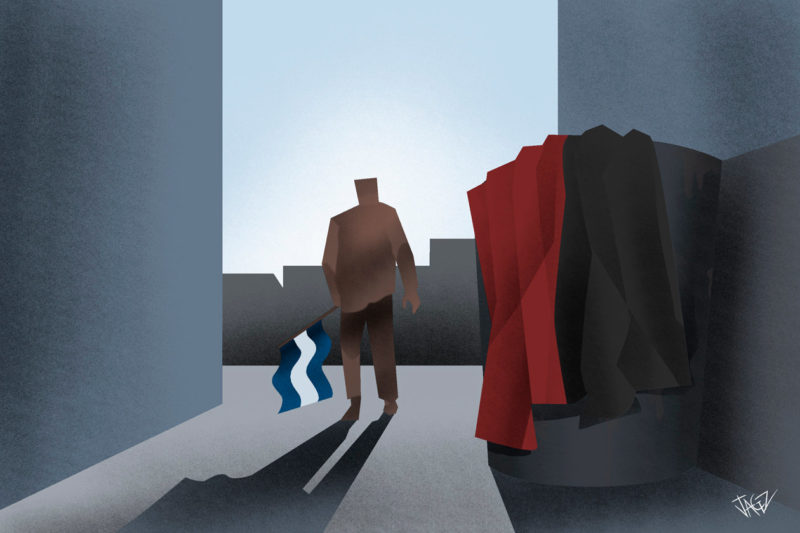
They grew up hearing about Sandino and the FSLN; and now they reject the dictatorship of Daniel Ortega and Rosario Murillo.
By Keyling T. Romero (Confidencial)
HAVANA TIMES – Twenty-seven year-old Marjourie Duarte knew her father, Nelson Duarte Galeano, only through VHS tapes. Her father was assassinated in Managua when she was 1 year old, during one of the Parrales Vallejos bus cooperative protests. In the tapes her father made when she was a baby, he explained to her why he chose to become a “Sandino Cub” (Sandinista army recruit) a decade before.
“I don’t know if he felt that he was going to die young and that’s why he made those tapes. And maybe people will say I’m crazy, but these days I speak with him,” says Marjourie. According to Marjourie, those tapes also provided her formation in the Sandinista ideals of her father.
Tightly bound by that link, Marjourie joined student organizations and the Sandinista Youth organization; and was even the adjunct political secretary in her neighborhood. Seven years ago, her disappointment led her to end her involvement in government party activities and now she says she feels betrayed.
Like Marjourie, others who are Sandinistas due to their beliefs and past involvement share that sentiment. Some began to feel this way even several years before April of 2018, when civic protests against the Daniel Ortega dictatorship exploded. The dictatorship responded with repression and death, leaving more than 300 murdered, thousands wounded and dozens of individuals unaccounted for, or “disappeared”.
We spoke with 4 Nicaraguans who grew up among the ranks of the Sandinista Front, and who have now distanced themselves from the rule of Ortega and his wife, and vice-president, Rosario Murillo. These are their stories.
“I was imprisoned with Daniel Ortega, and now he arrested my grandson.”
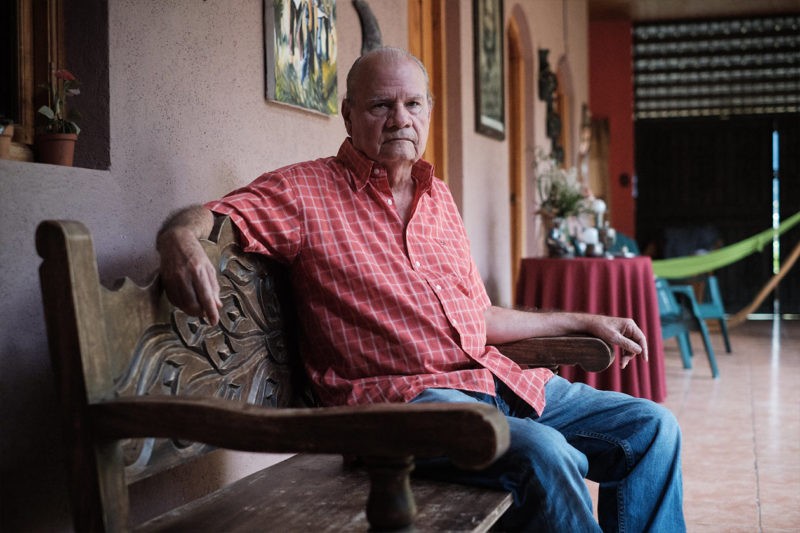
Manuel Tijerino, 74 years old, Retired Agronomist
Ever since I was a child, I’d heard and read about Sandino. When I was young, my mother gave us books (about him). Like a sponge, I soaked up everything that Gregory Selser (Sandino biographer) wrote. So much so, that by the time I was 12 years old, I was a messenger for my cousin, Charles Haslam (a guerrilla movement leader). I remember walking from Matagalpa to Yucul to deliver a message.
But it wasn’t until I arrived in Managua to study that I joined the Patriotic Youth, where I met Humberto and Daniel Ortega.
We formed ourselves into cells. My sister, Doris Tijerino, and I were part of the Ramirez Goyena school cell, along with Julio Buitrago, Carlos Guadamuz and Lenin Frixione. In the 70’s I was a collaborator with the FSLN as a messenger and offered safe houses. And although I was never among the guerrillas, I was jailed several times.
Once, in 1967, when returning to Managua with my sister Doris, we were seized and jailed. I remember that the jail was so full that a few days later they transferred me to the bathrooms. During that transfer I saw them transferring Daniel Ortega to another bathroom, with his eye almost falling out. That’s why he has that huge scar. We recognized each other, and he began to ask me who else had been imprisoned. At that moment, they brought me and my sister some food, but as she had been taken to another cell, I remember I put her plate on the ground and slid it toward Daniel, who was handcuffed and lying face down; and in that position he ate the food.
The other day I was talking with my son, Manuel Picado Tijerino, who was recently a political prisoner, and wondering if Daniel would remember what I remember, that I even passed him a plate of food. But, anyway, repression has no political distinction. When you are a dictatorship, left wing or right wing, it’s all the same.

I think many of us were romantic with our Sandinista ideals. We wanted everything that was nice, pure, cooperatives; we wanted a developing country, hegemony. But then one begins to question. I began to see that events weren’t following Sandinista ideals beginning in the 80’s. At that time, I was the first delegate of IRENA (Nicaraguan Institute of Natural Resources and the Environment) in Matagalpa. I remember that a government minister once told me that he cared more about a politician quitting than a technical professional quitting. That’s when I began to see that things weren’t going in the right direction.
But my biggest disappointment was the pact between Daniel Ortega and Arnoldo Alemán (1998). That’s when I said: now we’ve fallen into political garbage, into the shamefulness of a pact – something that Sandino didn’t want to accept during the ‘Espino Negro[1]’ pact. And by last year I said: I’m a Sandinista but not a ‘Orteguista’. A true Sandinista would never sign onto an “Espino Negro” -type pact. Daniel, have you forgotten the people? Have you forgotten development? Have you forgotten party hegemony?
What we have now isn’t Sandinista ideology. It’s painful to see a few opportunists involved in illicit self-enrichment. In my own family, we are divided. We are ten brothers and sisters; five of by siblings are extreme fans of the government, and four disagree with what they have done.
Many people are currently saying that those in government should go, that they don’t want anything more to do with Sandinista ideals. But what I feel is that people don’t want anything more to do with the “Sandinista Front”.
“The police now come to harass us.”
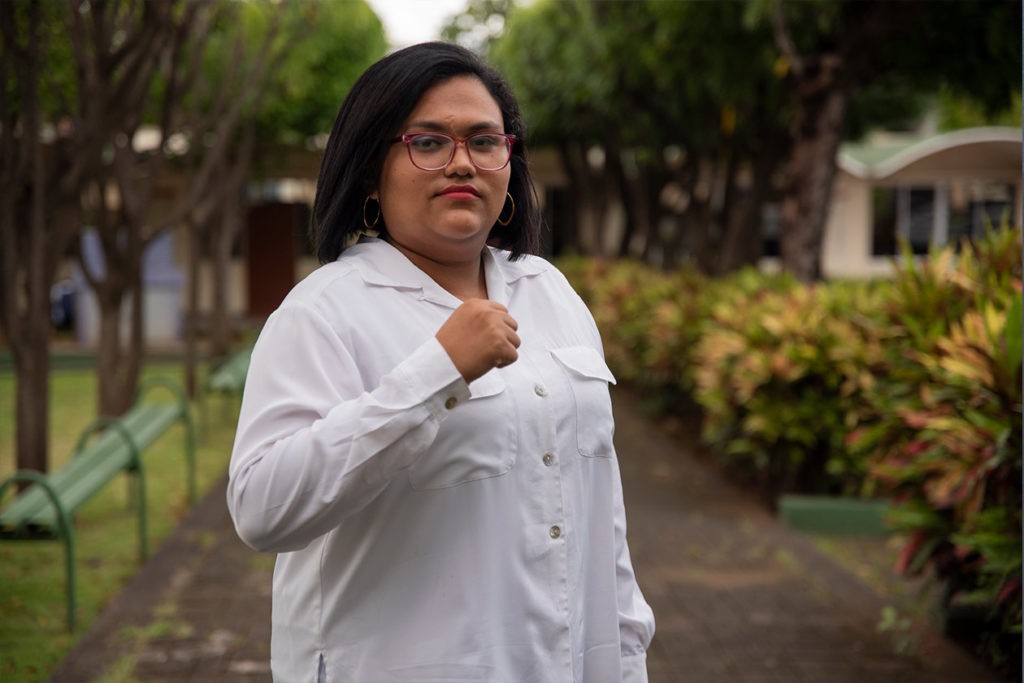
Marjorie Duarte, 27 years old, University Student in Disobedience
July 19, (the anniversary of the Revolution) was always a day of happiness in my house. We didn’t go to the Plaza to celebrate but we turned on the TV very early, turned up the sound to the maximum on our audio equipment and greeted all the neighbors that went passed on their way to listen to Daniel Ortega’s speech. So, I grew up experiencing that fervor. My dad was a “Sandino Cub”; and my mom was part of the literacy campaign. And I can say that these are things I love, they are part of my identity, of my past, and I can’t ignore them.
When I was 14 years old, I joined the Sandinista Youth. I joined because I felt it was the right thing to do at the moment. And then, in high school, I joined the High School Students Federation and continued fully involved in the Sandinista Youth when I could then vote. That’s when I had my first positions of responsibility. However, I left because I felt like it was all a mess; and I went on to join the Citizen Power Council (CPC) in my neighborhood. Soon after, they appointed me adjunct secretary of the political secretary.
At that time, everything in my neighborhood had to go through me. And I won’t deny it; I liked having that bit of power. I felt as though I were another aide to Daniel Ortega. In that environment I learned how to be a manipulator because in truth, that’s what they do. At first I said: Daniel doesn’t know everything that we are doing on the neighborhood level. But when they were reforming the Constitution and making changes to public institutions, I said, no, this isn’t what I had been taught. This is just a bunch of opportunists. What had happened was that I was no longer the same Marjourie. I had entered the university and was studying law, and so I was seeing everything differently.
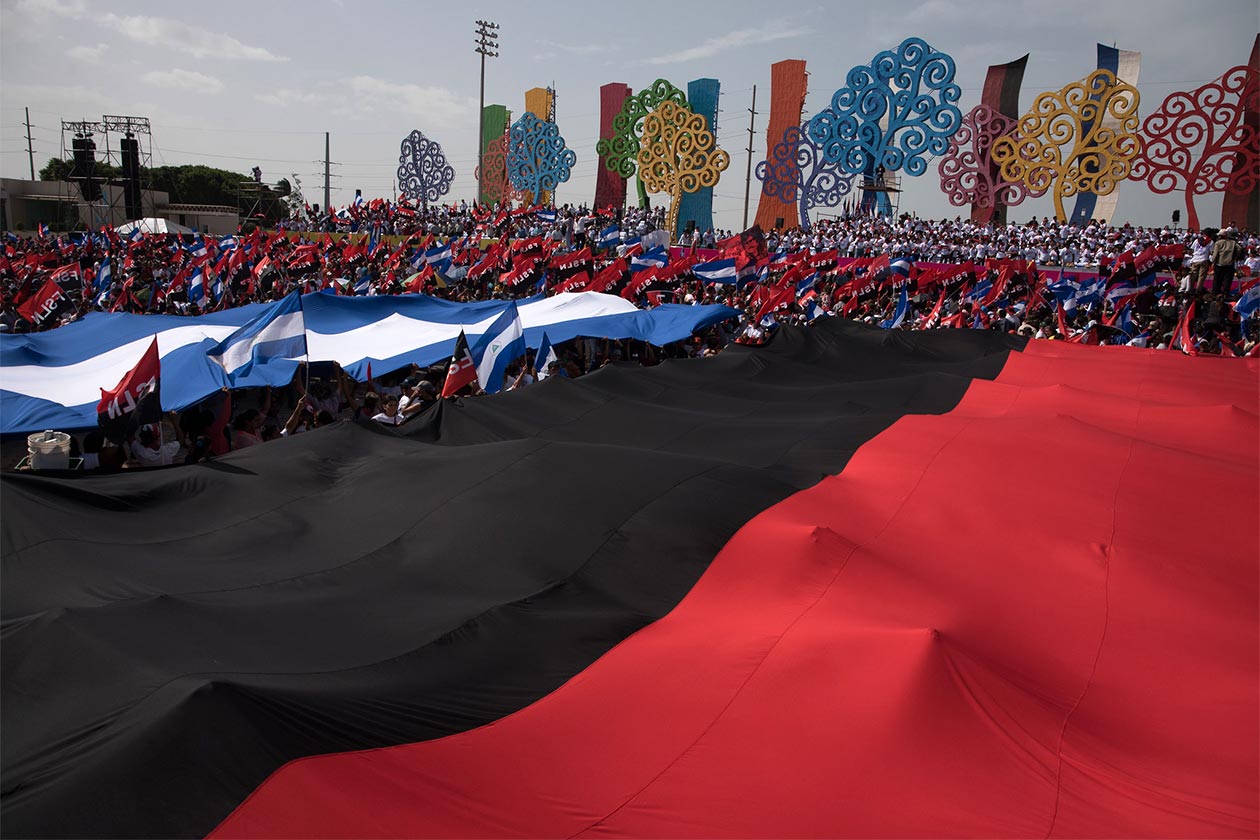
At that point in time, everything became very difficult in my home because everyone was a Sandinista militant. In family gatherings we ended up fighting because I defended my position and they defended theirs. Last year when the protests began, we were fighting a lot, principally myself and my older brother. He would say that COSEP (Superior Council for Private Enterprise) was manipulating people and I would say, but they (the government) are killing people.
All this fighting resulted in my brother no longer attending Sandinista Front activities because we had this internal conflict. My younger brother and I would go to the “Blue and White” opposition marches and my older brother couldn’t go to the government marches against us because he could end up attacking us, or if he beat someone in the opposition, it would be like beating us. Then my brother and other family members realized what was happening in Nicaragua and they left the party. And that has brought consequences.
Now the police come to harass us. They say they are going to burn down our house. Two weeks ago, there was a health fair in the neighborhood, and they put up an activity tent in front of our house to intimidate us. I went outside and said, “Look, we respect what you are doing but we don’t want an activity tent here”.
Another example is they now follow me. And we aren’t the only ones. There are many dissidents in the neighborhood; but because we all know each other – the dissidents and the current party leaders – we have a power struggle. They know they can’t attack us because we have our own people inside the party who protect us. Even inside the police there are people who protect the dissidents.
It’s not easy to go against the current. Even though I now have the support of my family, it’s not easy. It’s also an internal conflict for me because I grew up believing in Sandinista ideology. But I think what has happened is that there has been a kidnapping (of Sandinista ideology). I am a Sandinista because I believe in the struggle and in empowering oppressed peoples, but those ideals no longer exist. What we have now in the country is an Ortega machine and I’m not a follower of Ortega.
“I found out that fraud had been committed and I stopped feeling proud.”
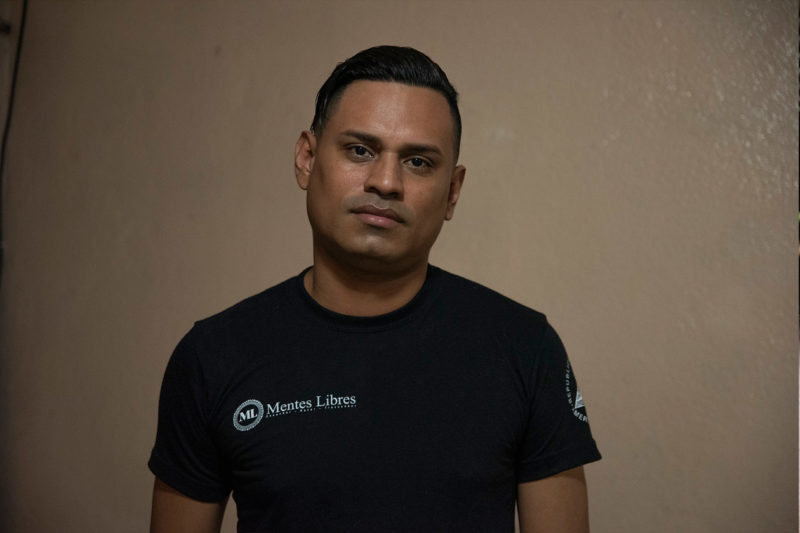
Gabriel Téllez, 30 years old, Social Worker
Ever since I was a child I would go to the Plaza for celebrations, to the reenactments of the historical tactical retreat known as the “repliegue”, and to party activities. In fact, the first vote I cast was for the Sandinista Front in 2004 during the municipal elections. After that I worked on electoral campaigns. But the last time I voted was in 2012, again in the municipal elections.
I never joined the Sandinista Youth, but I was a party militant. I had my ID card and I was a political activist. I remember that when there weren’t elections, the work was mostly in support of the July 19th celebrations, going around putting up flags and convincing people into going to those activities. But the truth is that in 2011 I realized that there had been fraud, and I stopped feeling proud because there was no need for us to have committed that fraud. In those elections I voted twice for Daniel and in truth, I felt bad. I knew what we were doing wasn’t right, but it didn’t matter to us. We were convinced that the Sandinista Front must continue in power, to continue the social programs.
However, my point of departure was in 2014 during the reforms to the Constitution and the intent to perpetuate the party in power. And after that I saw that there were no other options from which to choose. That’s when I realized that freedom was being curtailed and opportunities were being closed off. Even within the Sandinista Front, there was no room for criticism, for dissidence, to voice an opinion. So, if there was no longer democracy within the party, much less democracy existed within the country.
For me, being a Sandinista meant that the poor had preferential opportunities. It meant fighting for the most vulnerable social classes. For me, being Sandinista was something more than an ideology; it was an ideology put into social practice in society, and that motivated me a lot.
I was a convinced Sandinista. No one ever had to tell me: “Do this, do that”. I always went wherever I was invited and with my own resources. But one has to remember what it was like to be Sandinista when the Front was in the opposition. In the first years in opposition it was very different from what is it now. Now, if they don’t provide transport, if they don’t pay you, if there is no kind of incentive, you don’t move. In those previous times, for me, being a Sandinista made me feel proud. And I can tell you that it was something I felt was honorable.
I liked Daniel Ortega and Rosario Murillo a lot. I considered her an intelligent and very capable woman. I believed in them. And I believed they could create a good government. I also believed that they would make room for the new generations in order for them to take over the reins of the party. But that wasn’t to be.
In 2016, I didn’t vote. Instead, I participated in the campaign called “I won’t cast my vote”. So, my change of heart came prior to April of 2018. But logically, one holds onto a certain connection with Sandinista ideology, to the romance of being Sandinista. After April of last year, all that ended. I realized that there is no possibility of a Sandinista government without Daniel Ortega; that the party has been kidnapped; there is no mechanism for collective management; and that for me, “Sandinismo” has died.
“I was questioned and threatened for going to the protests.”
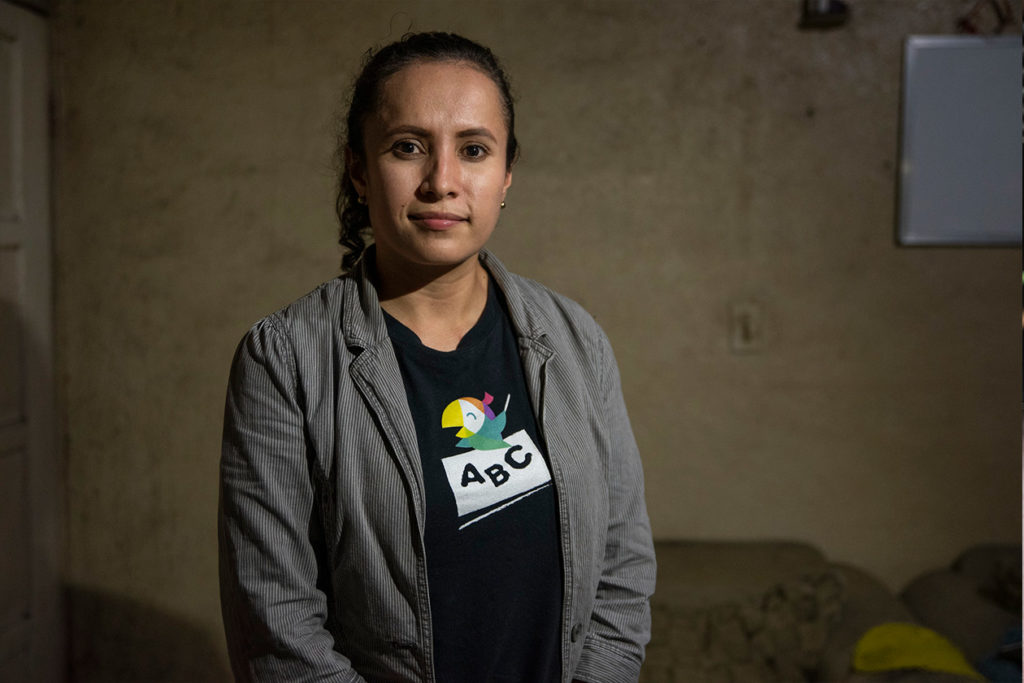
Zenia Mendoza, 34 years old, Communications Specialist
I used to sympathize with the Sandinista Front due to family tradition. My family consists of people who were guerrilla fighters, and who worked in the literacy campaign. So, I have deep roots in Sandinista ideology. Starting when I was little, I participated in party activities where I used to live, such as selling things, organizing people to go to the Plaza and time-dependent activities.
Four years ago, I became fully involved when I worked in a State institution, but it wasn’t voluntary. Honestly, it was like: “If you are going to work with us, you know you will have to support the political line”. I complied with my professional role, but I also had the political role which didn’t include any way to say: “No, I can’t go”.
So, that’s when they sent me to deal with roofs, distribute food packets, assist with some of the events they had in the government headquarters in El Carmen, help with logistics and various things. At the beginning everything was really nice, wonderful, because I believed strongly in the Sandinista social project. But then it began to get a bit uncomfortable because it involved going about convincing people to go to activities, guaranteeing that they show up at the Plaza and at events.

In April of last year, I was in total disagreement with the Social Security reforms that they wanted to install. So, I decided to participate in the protests. I remember that the 19th of April I went with part of my family to protest next to the Rigoberto Lopez Perez school, where the first attacks against protesters took place. The police were along the side of the La Biblia park and we were near the traffic lights. I did a Facebook Live there. I later looked for it in my networks to file a complaint with the Inter-American Commission on Human Rights (IACHR in English, CIDH in Spanish) but realized that they had erased it, especially the part where the police were firing rubber bullets.
I was questioned and received indirect threats for going to the protests from people who knew me in the State institution where I worked. They asked me: “And what are you doing there? Where are your convictions?” On April 20th, I published a private communication in my social networks saying that, yes, I had been a Sandinista, but as a result of all the violence that had occurred in those days, my way of thinking had changed.
Currently, my criticism is directed at the leaders – at the party itself, because I know many Sandinistas who are deeply committed. And in my heart, I continue to be Sandinista. I think that what has made the Sandinista Front stink are the leaders. For that reason, I think that this is a party project that won’t survive beyond 2021. Unless everything in the system within the party is changed.
[1] Pact between U.S. President Calvin Coolidge’s emissary, Henry Stimpson and General Moncada, of Nicaragua’s Liberal party, in 1927.






Comments are closed.